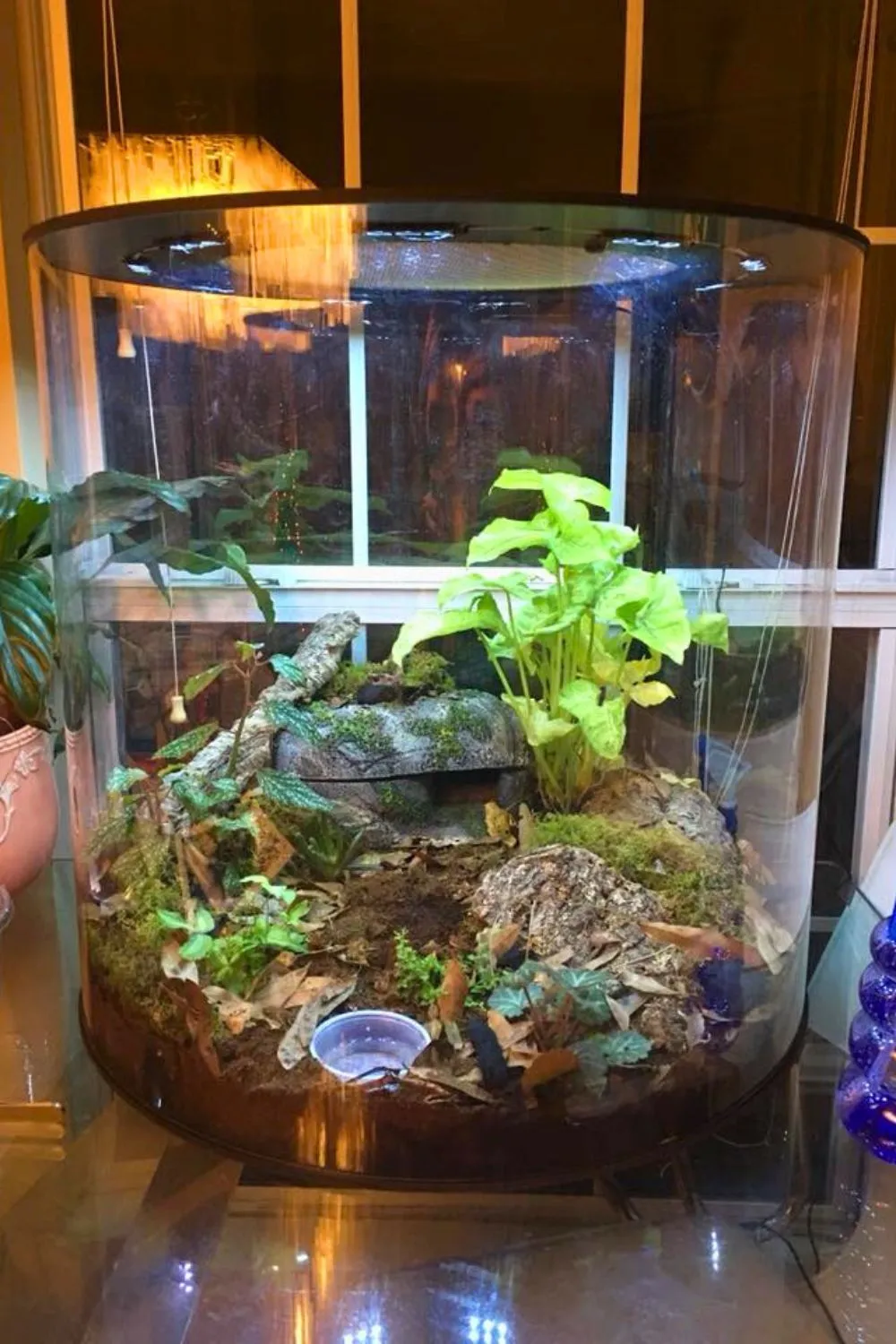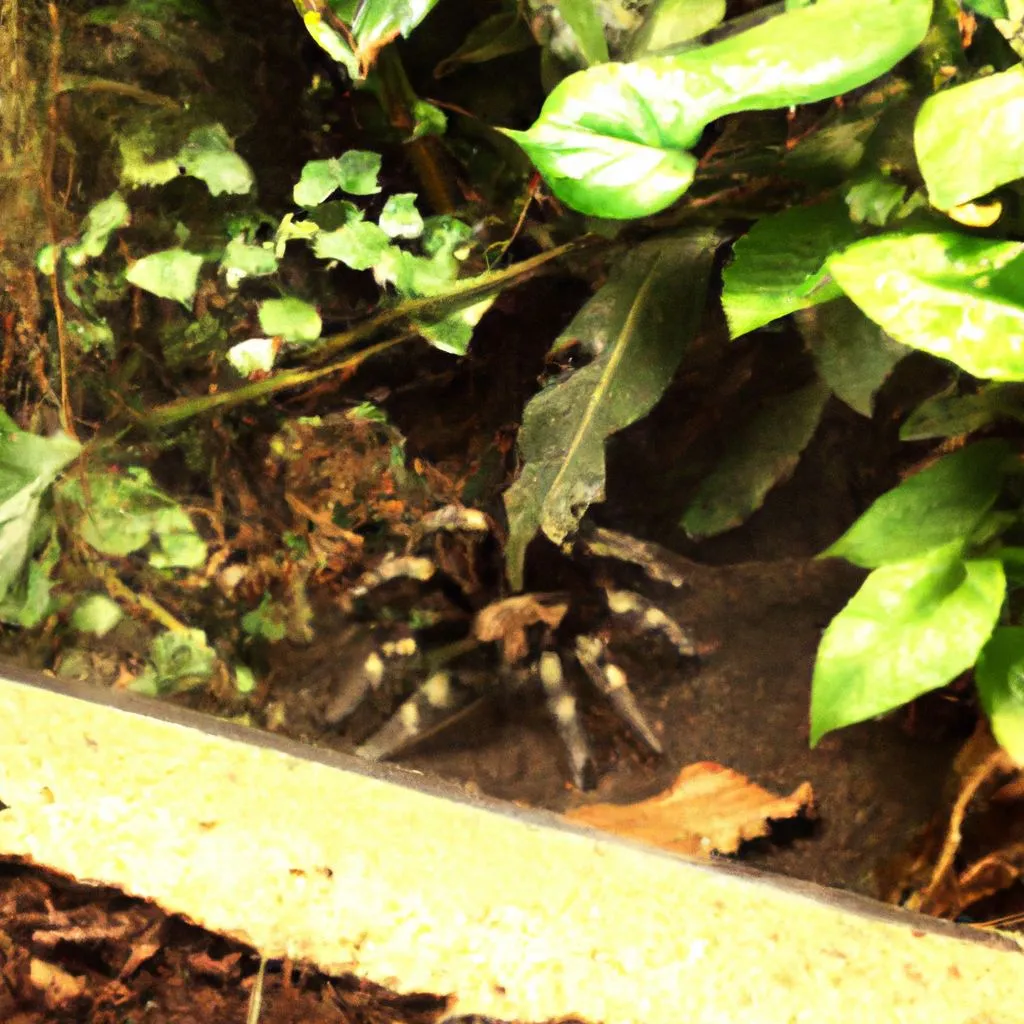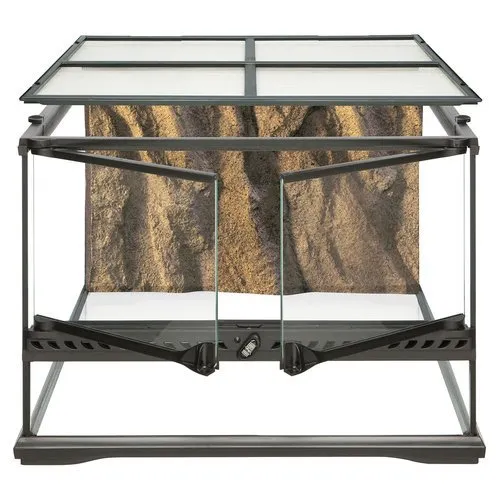Understanding Tarantula Enclosure Size
Choosing the right enclosure size for your tarantula is crucial for its health, happiness, and overall well-being. Many new tarantula keepers make the mistake of assuming bigger is always better, but this isn’t necessarily the case. A tarantula enclosure that’s too large can actually create more problems than it solves. This guide will help you understand the factors to consider when selecting the perfect size for your eight-legged friend, ensuring a comfortable and enriching environment. It’s important to remember that tarantulas, unlike some other pets, don’t need a lot of space. Their needs are different, and their enclosure should reflect those needs to create the best possible environment for them.
Why Enclosure Size Matters
The size of your tarantula’s enclosure significantly impacts its quality of life. An appropriately sized enclosure provides a sense of security, aids in hunting, and helps regulate the environment within. An enclosure that is too small can restrict movement and create stress, while one that is too large can lead to other issues that can negatively affect your tarantula. Finding the right balance is key to ensuring your tarantula thrives. A well-sized habitat mimics the tarantula’s natural environment, allowing it to exhibit natural behaviors and live a longer, healthier life. Consider the specific species and the size of your tarantula when making your decision.
Impact on Tarantula’s Well-being

The correct enclosure size is directly linked to your tarantula’s overall well-being. A cramped enclosure can limit movement and lead to stress, which can manifest as refusal to eat, excessive hiding, or erratic behavior. On the other hand, an enclosure that’s too large can also cause stress, making it difficult for the tarantula to find food and feel secure. Furthermore, it can make it harder to maintain the correct temperature and humidity levels, which are essential for the tarantula’s health. A comfortable and appropriately sized habitat will encourage natural behaviors and reduce stress, contributing to a healthier and happier tarantula. By providing the right size, you are essentially providing an optimal living situation for your spider.
Factors Influencing Enclosure Size
Several factors influence the ideal enclosure size for your tarantula. These include the species of tarantula, its current size and growth stage, and the necessary substrate depth. Arboreal species, which live in trees, generally require taller enclosures to facilitate climbing, while terrestrial species need more floor space for burrowing. It’s important to research the specific needs of your tarantula species. Consider how big your tarantula will get when it is fully grown. Juvenile tarantulas will require a smaller habitat than adults. By considering all these factors, you can provide your tarantula with a comfortable and enriching habitat.
Tarantula Species and Size
Different tarantula species have different size requirements, reflecting their natural habitats and behaviors. For example, larger species like the Goliath Birdeater (Theraphosa blondi) will need a much larger enclosure than a smaller species like the Trinidad Olive (Holothele incei). Research the specific species you have to determine the ideal enclosure dimensions. Terrestrial species generally do best in enclosures that are wider than they are tall, as they will need room to move around and burrow. Arboreal species, on the other hand, often need taller enclosures to facilitate climbing. Understanding the natural behaviors of your specific tarantula will greatly help you determine the appropriate enclosure.
Tarantula’s Growth Stage

The tarantula’s growth stage is another critical factor in determining enclosure size. A juvenile tarantula should start in a smaller enclosure. As the tarantula grows and molts, you’ll need to gradually increase the enclosure size. A small enclosure provides a sense of security and makes it easier for the tarantula to find food. Moving a juvenile tarantula into an enclosure that’s too large can cause stress and make it difficult for it to catch prey. As your tarantula grows, you’ll need to upgrade its enclosure. Always monitor your tarantula’s size and behavior to determine the correct time to upsize its habitat.
Substrate Depth Requirements
The depth of the substrate is essential and directly affects the enclosure size. Substrate depth provides burrowing space for terrestrial species, which is a key behavior and necessity for many tarantulas. The substrate should be deep enough for the tarantula to create a burrow that’s comfortable and secure. Arboreal species that don’t burrow need a moderate amount of substrate. The substrate also helps maintain humidity levels within the enclosure. Be sure to research the proper substrate depth for your tarantula species. Using too little substrate is a common mistake, and could lead to stress.
Determining the Right Enclosure Size
To determine the right enclosure size, consider the tarantula’s leg span and overall size. A general guideline is to provide an enclosure that is roughly two to three times the tarantula’s leg span in width and length. The height of the enclosure should be sufficient to accommodate substrate depth and any decorations without restricting the tarantula’s movement. Research the specific requirements of the tarantula species that you have, this will give you more precise figures. Always err on the side of a slightly smaller enclosure, especially for juveniles, as it provides more security. The size of the enclosure is essential for a healthy tarantula.
Measuring Your Tarantula

Measuring your tarantula is a good way to get an estimate of what size enclosure you will need. The easiest way to measure a tarantula is to measure its leg span. Gently place a ruler next to the tarantula and measure the distance from the tip of one leg to the tip of the opposite leg. Be careful not to harm your tarantula. Take this measurement and then multiply it by two or three to get the appropriate width and length of the enclosure. Remember that the size will change as your tarantula grows, so you may need to measure it periodically and adjust the size of its habitat. Record the measurements for future reference.
Calculating Enclosure Dimensions
Once you have your tarantula’s measurements, you can calculate the ideal enclosure dimensions. Use the leg span measurement as a starting point, multiplying it by a factor of two or three for the width and length. Consider adding extra space for the substrate depth and any decorations, such as hides or climbing structures. Make sure the enclosure is well-ventilated to prevent mold growth and maintain the correct humidity levels. Remember to choose an enclosure made of a durable, non-toxic material. The dimensions must meet the tarantula’s needs.
Preventing Problems with Oversized Enclosures
Oversized enclosures can lead to several problems. One of the most common is difficulty feeding. The tarantula may have trouble finding its prey, and it can go hungry. Another issue is increased stress, which can manifest as excessive hiding or erratic behavior. A large enclosure can also make it more challenging to maintain the appropriate temperature and humidity levels. If you realize your enclosure is too large, you can consider adding more hiding places to make the tarantula feel secure, or moving the tarantula to a smaller habitat. When in doubt, choose an enclosure that is slightly smaller, but has adequate space for the tarantula to live and grow.
Feeding Difficulties

Feeding can be difficult in an enclosure that’s too big. Tarantulas are ambush predators, and they rely on being close to their prey. In a large enclosure, the tarantula may have trouble locating its food. This can lead to the tarantula refusing to eat, which is a sign of stress. If you notice your tarantula is not eating, and the enclosure is oversized, consider providing more hiding spots or even downsizing the enclosure to make it easier for the tarantula to hunt. Ensure that you’re also offering the right size of prey. Monitor your tarantula’s eating habits.
Increased Stress and Hiding
An oversized enclosure can lead to increased stress in tarantulas. These spiders prefer to feel secure in a smaller space. Stress can lead to increased hiding behavior, where the tarantula spends most of its time hidden away in its burrow or under a hide. This can make it more difficult to observe your tarantula and monitor its health. If your tarantula is constantly hiding, it might be a sign that the enclosure is too large, making it feel vulnerable. Provide adequate hiding spots and a smaller, more secure enclosure to reduce stress. Make sure to regularly observe your tarantula’s behavior to identify any signs of stress.
Top Tips for Tarantula Enclosure
Choosing the right enclosure size is only one part of providing a great habitat for your tarantula. Consider these helpful tips: Provide a secure lid to prevent escape, offer a water dish with fresh water at all times, and avoid overcrowding the enclosure with decorations. Select an appropriate substrate that promotes burrowing. Keep the enclosure clean by removing uneaten food and any waste. Maintain the correct temperature and humidity levels using a thermometer and hygrometer. Regular observation of your tarantula and its behavior will help you to determine its needs. Provide a stimulating and safe environment.
Choosing the Right Substrate

The substrate is an essential part of your tarantula’s enclosure, and the correct choice is critical. The substrate should be appropriate for your tarantula species and its natural habitat. For most terrestrial species, a mixture of substrate and peat moss works well, allowing them to burrow comfortably. The substrate should also help to maintain the correct humidity levels. It should be able to absorb moisture. Avoid substrates that can be toxic or irritating to your tarantula. Clean substrate can help prevent bacterial growth. Research the best substrate for your species.
Providing Hiding Spots
Providing hiding spots is a must-do for any tarantula enclosure. Hiding spots give the tarantula a sense of security and reduce stress. This can be anything from a piece of cork bark to a commercially available hide. The hiding spot should be large enough for the tarantula to fit comfortably inside, without being too large. Make sure the hide isn’t too heavy so it won’t crush the tarantula. Place the hide in a strategic location within the enclosure, but be sure not to overcrowd the enclosure. This should allow the tarantula to feel safe while still allowing for easy observation.
Maintaining Humidity Levels
Maintaining the correct humidity levels is crucial for your tarantula’s health and molting process. Humidity requirements vary depending on the species, so research the needs of your specific tarantula. Use a hygrometer to monitor the humidity levels. You can increase humidity by misting the enclosure with water, adding a water dish, or using a substrate that retains moisture. Avoid allowing the enclosure to become too humid, as this can lead to mold growth. Make sure the enclosure has proper ventilation. Regulate and monitor the temperature and humidity levels for your tarantula’s well-being.
